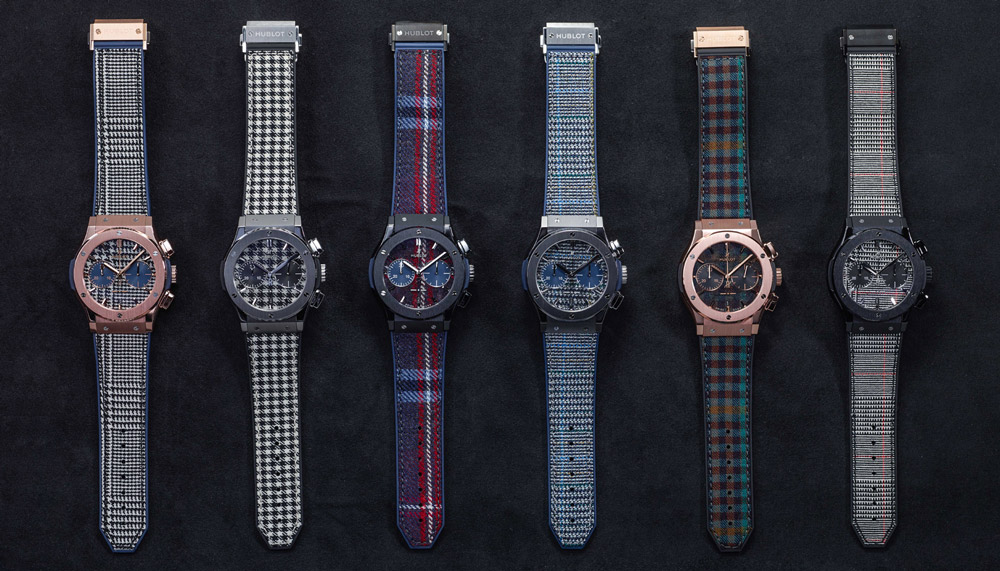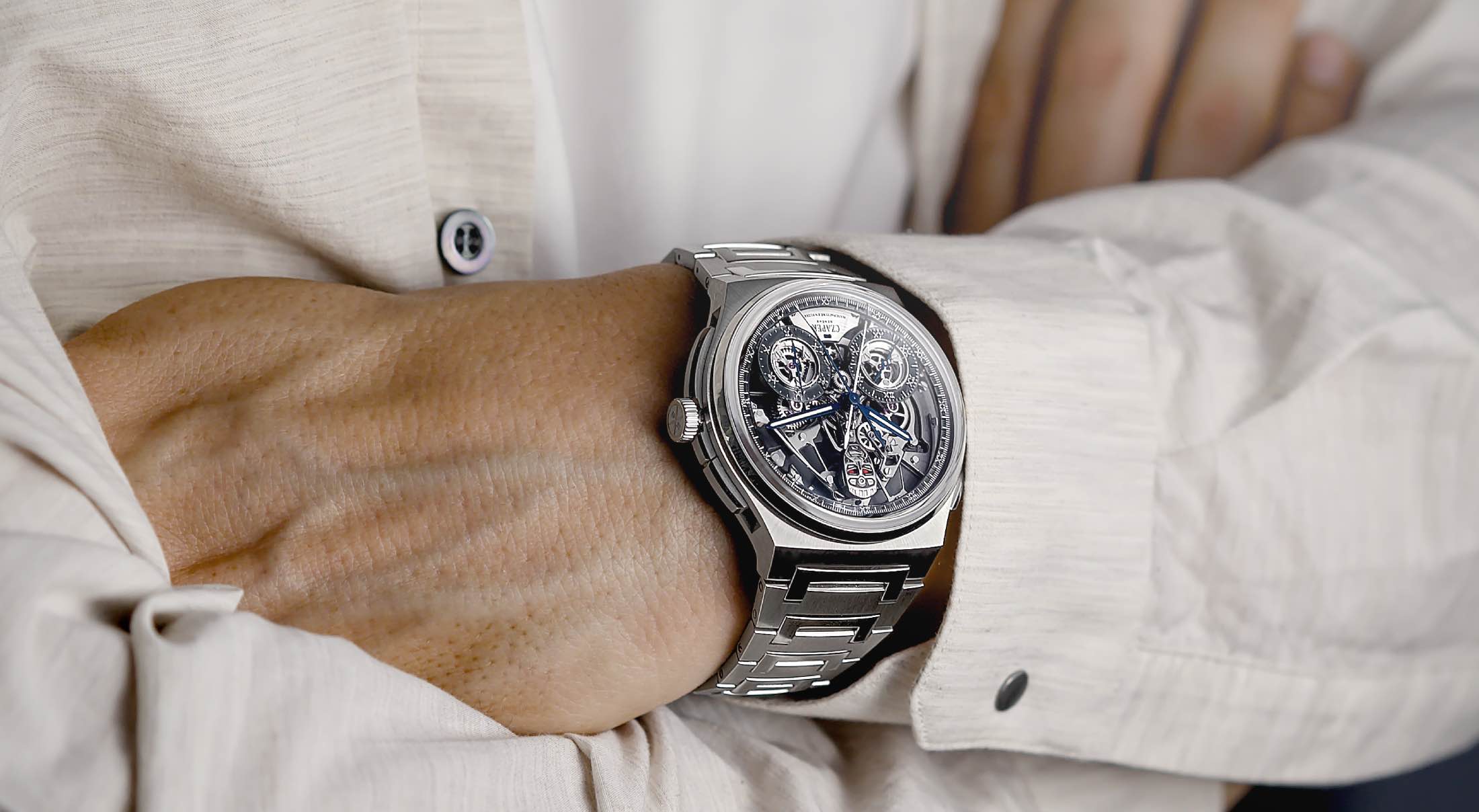Of Hublot’s myriad collaborations, it is the limited edition watches made with Takashi Murakami that stand out as some of the most colourful, coveted and endearing
Though his time on the stage was brief, Takashi Murakami was everything the capacity crowd imagined him to be. “Enjoy yourselves tonight,” he told the expectant audience. “I will be going back to my hotel to sleep!”
The 62-year-old was in Singapore last November to launch his latest collaboration with Hublot—the MP-15 Takashi Murakami Tourbillon Sapphire limited edition with central flying tourbillon—and was given a rock star’s reception. Hublot aficionados, watch enthusiasts and celebrities turned up in force to see Murakami and the watch. Their roar of laughter and applause at Murakami’s candour was testament to the effect the contemporary pop artist and his works have on his audience; unbridled joy at experiencing something that is honest and adorable all at once.
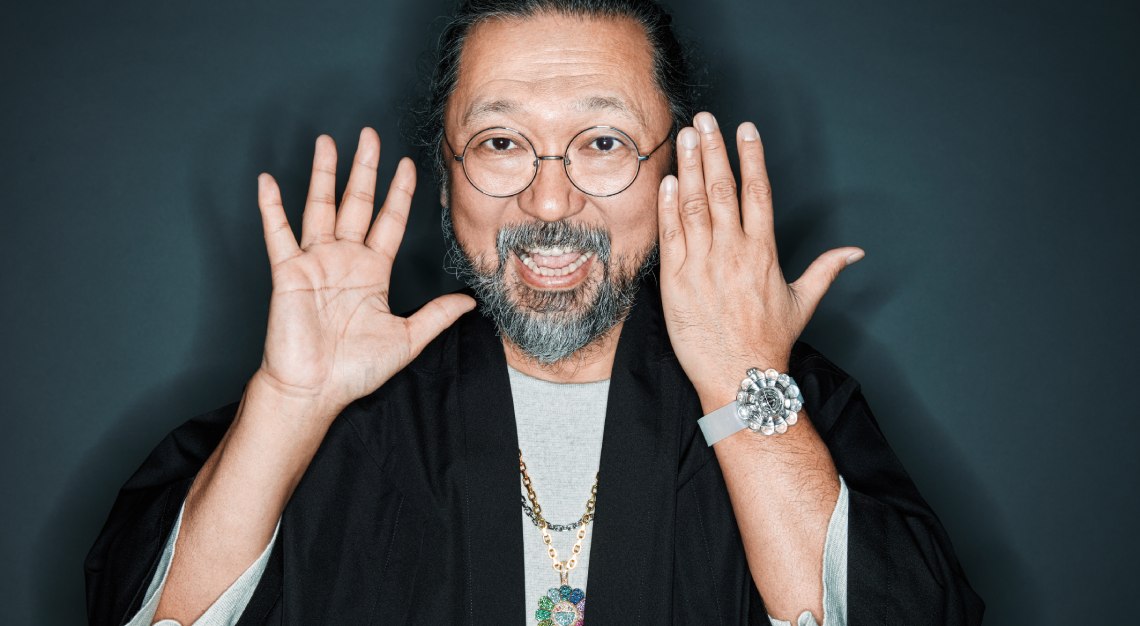
Looking like an animated character himself, Murakami, with his round-framed glasses and trademark faux-surprise pose, exudes child-like generosity and charm—not unlike the colourful anime-style motifs he lavishes on his works. Though formally trained in traditional Japanese painting, Murakami pioneered the postmodern art movement Superflat in 2001, which combines two-dimensional art, traditional Japanese art, manga and anime. Among his most famous creations is the ‘smiling flower’, which he designed in 1995 and has appeared on album covers, music videos, fashion accessories and, since 2021, on highly exclusive Murakami-designed limited-edition watches.
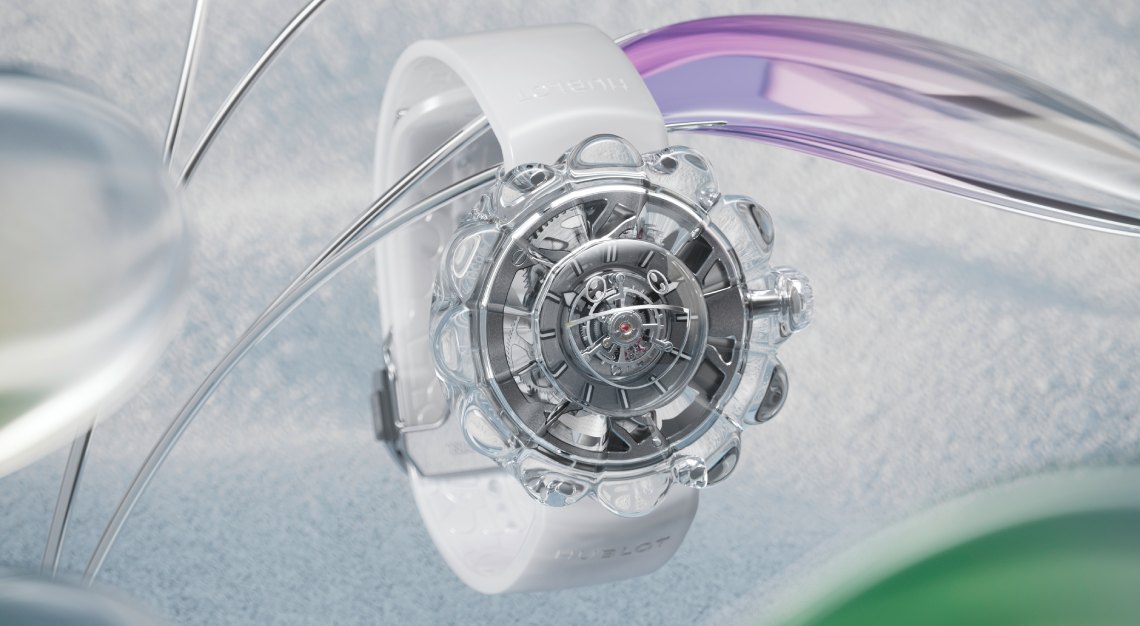
On the MP-15, which is limited to 50 pieces, the ‘smiling flower’ again takes centre stage. In fact, the motif makes up the entire case and dial: the petals fanning out over the wrist, as the famous smiley-faced pistil reveals the watch’s mechanical heart—Hublot’s first series-produced central flying tourbillon. Rotating theatrically in the middle of the dial to fortify timekeeping precision, the tourbillon sits on a movement that is just as sophisticated. Made entirely in-house by Hublot, the hand-wound movement stores up to 150 hours of power reserve, which requires a special USB rechargeable stylus to wind it up.
“Our customers do not want to choose between technology and style; they want both. Our mission is not to fulfil their expectations, but to surpass them. The MP-15 is designed to do just that,” says Hublot’s CEO Ricardo Guadalupe.


The other striking feature about the MP-15 is its transparency. The watch’s case, caseback and crown are crafted entirely in clear sapphire. Extremely hard and scratch-resistant, and bearing toughness that is second only to diamonds, sapphires are challenging to cut and shape, requiring specialised machining tools. Yet, Hublot has done a wonderful job of machining the sapphire, so that the voluminous petals and domed pistil bear soft curves all over.
“Up until now, my work has been focused on colour. It was a really exciting challenge to start a whole new chapter focusing on absolute transparency. The forms and volumes are perceived completely differently. I’m very proud of the result,” says Murakami.
Fusing Possibilities
Hublot’s creations with Murakami stem from its Art of Fusion motto. The ethos was crystallised in 2004, when then-CEO Jean-Claude Biver took over the brand, seeking a succinct tagline that encapsulated Hublot’s modus operandi.
The spirit of the expression, however, had already been established in 1980 when Hublot was founded. That year, the brand launched with the introduction of the world’s first fusion timepiece that combined a gold case with a rubber strap. Little did Hublot and its fans know that the concept of fusing seemingly disparate materials would be taken to extremes in the years to come.
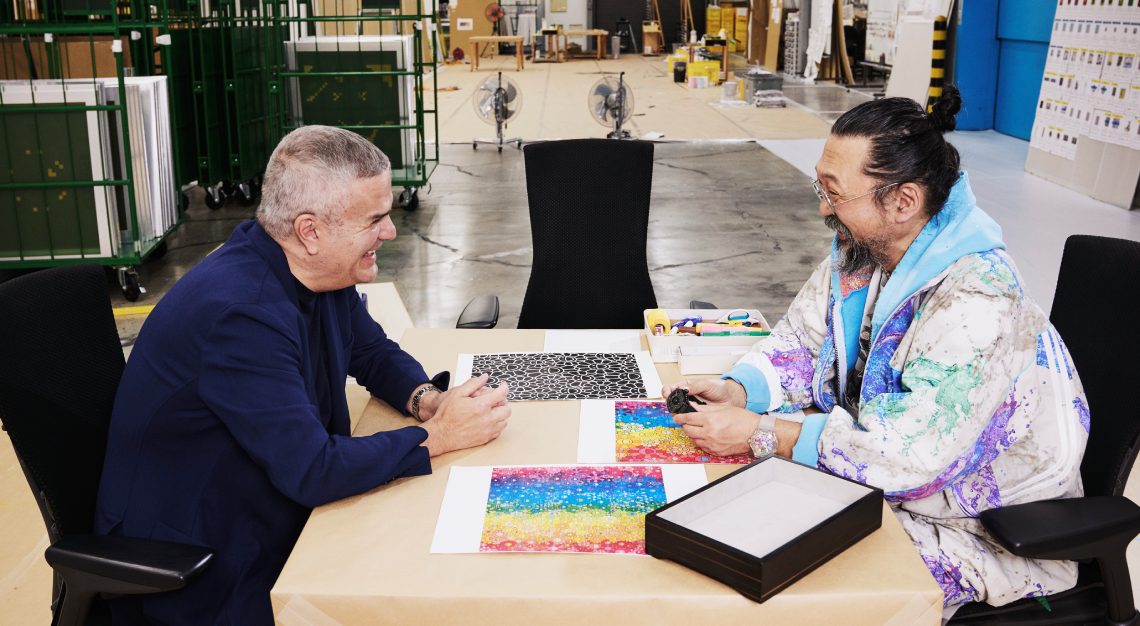
The rebirth of Hublot in the 2000s was marked by the aptly named Big Bang collection, a range of dynamic sports watches that embraced material experimentation. Innovations such as new gold alloys enhancing the toughness and lustre of traditional precious metal, coloured high-tech ceramics, and, as seen with the MP-15, timepieces featuring hard-to-construct full-sapphire cases, are just some examples that demonstrate Hublot’s commitment to progressive watchmaking.
“That is what we do,” said Guadalupe at an earlier interview. “And that’s why I surround myself with a very strong team that prides ourselves on innovation and creativity. We invest very heavily in research and development at all levels—more so than other brands.”
Besides innovating from within, the brand eagerly pursues creative talents outside the watch industry to help shape its horological ambitions. Acclaimed tattoo artist Maxime Plescia-Büchi, designer Samuel Ross and sculptor Richard Orlinski have been enlisted by Hublot to collaborate on watches with tremendous success. Yet, it was the partnership with Murakami, an art and pop culture icon himself, that ignited the imagination of art and watch enthusiasts, along with the general public.

Hublot invited Murakami to its watchmaking facilities in Nyon, Switzerland, in 2020. After touring the manufacture and engaging with the watchmakers, Murakami wasted no time in rolling out the Classic Fusion Takashi Murakami All Black. A cute and charming take on Hublot’s All Black watch from 2006, the black ceramic-cased watch featured a sculpted dial with the artist’s signature ‘smiling flower’ motif, replete with spinning petals and set all over with black diamonds. The watch was a sold-out success and inadvertently led to more collaborations.
Following the Classic Fusion Takashi Murakami All Black came the Classic Fusion Takashi Murakami Sapphire Rainbow in 2022. Encased in sapphire and set with coloured stones retailing for £88,000, it sold out promptly, as did their third collaboration: an NFT-focused endeavour comprising 13 NFTs linked to 13 new and unique Classic Fusion watches, which included the Classic Fusion Takashi Murakami Black Ceramic Rainbow that pairs a black ceramic case with rainbow-coloured gems.



Prior to the latest sapphire-cased MP-15, Hublot actually released a similar version set with coloured gemstones on the petals, powered by the same central flying tourbillon movement, for the Only Watch charity auction in early 2023.
That the ensuing fully transparent version looks as artful and evolved as it does is no accident, but a carefully calibrated trajectory of creativity, experimentation and, Hublot’s increasingly expansive take on the Art of Fusion.
“(With Hublot), I realised to what extent the traditional know-how, precision, futuristic technology and craftsmanship were all intertwined in the creation of a watch. Bringing my art into the creativity of these watchmakers represents a unique adventure for me,” says Murakami. Suffice to say, it has been quite the adventure, too, for Hublot and its fans.

